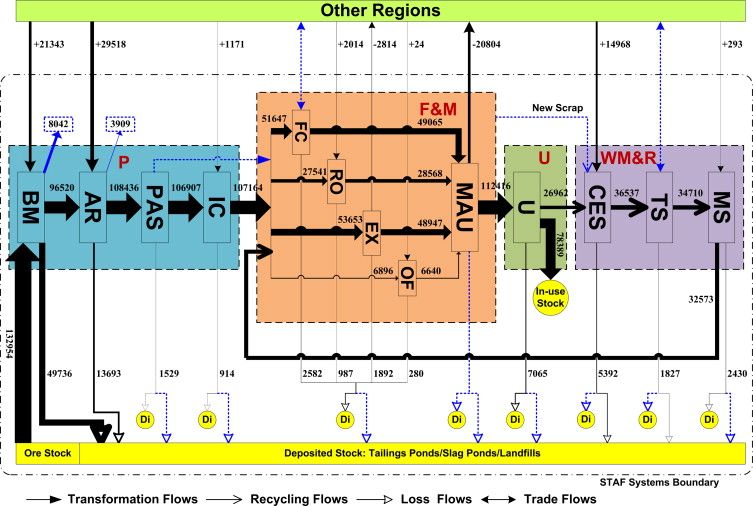Chen, Wei-Qiang*; Shi, Lei
Resources, Conservation and Recycling 2012 65, 18-28. DOI: 0.1016/j.resconrec.2012.05.003
Abstract
This paper analyses the anthropogenic stocks and flows of aluminum in mainland China from 1950 to 2009 using time-series data for mining, production, fabrication, manufacturing, trade, and loss rates, and applies a dynamic top-down method to model scrap generation. Results show that growth rates of all flows increased from decade to decade, with 75% of most of the flows taking place in the last two decades. Of the 230 Tg aluminum entering China's anthroposphere, only 34% accumulates in in-use stock, and China's per-capita in-use stock (58 kg) in 2009 is 12% of the per-capita in-use stock in 2006 in the United States (490 kg). In addition, the share of secondary aluminum in the production of unwrought aluminum was less than 25% after 2000. These results imply that China's in-use stock of aluminum is still too “young” and small to generate high quantities of aluminum scrap for domestic secondary aluminum production. Because of this, China still depends mainly upon primary aluminum. From the 1980s to the period of 1990 to 2009, China changed from a net exporter of raw materials into a net importer and from a net importer of manufactured products into a net exporter. In 2009, China's static depletion time of bauxite was less than 15 years. Given the potential to increase its in-use stock, a secure supply of bauxite may become a challenge for China in the near future. Three dynamics driving China's rapid increase of primary aluminum production (PAP) were identified, and their impacts from 1991 to 2009 were quantified. The first, demand for aluminum by domestic in-use stock, was the most significant factor driving China's PAP increase. The second dynamic, China's net export of aluminum in the metallic form, became an important factor in stimulating PAP's increase in the 2000s. Lastly, the impact of losses to the environment in the metallic form on PAP is substantial and stays that way throughout time. Minimizing losses represents an opportunity to offset some demand.
Cumulative anthropogenic aluminium cycles in mainland China, 1950–2009.
